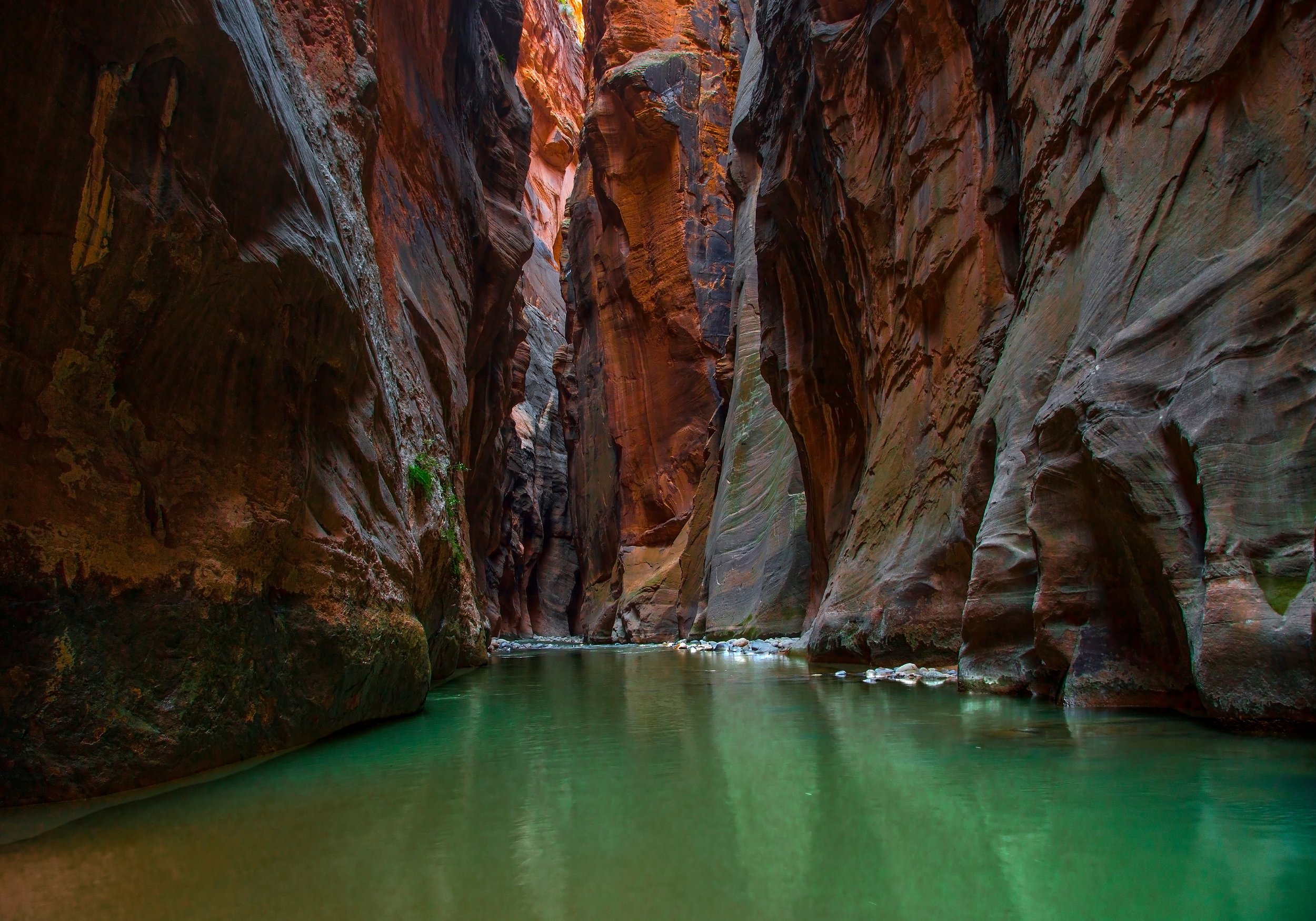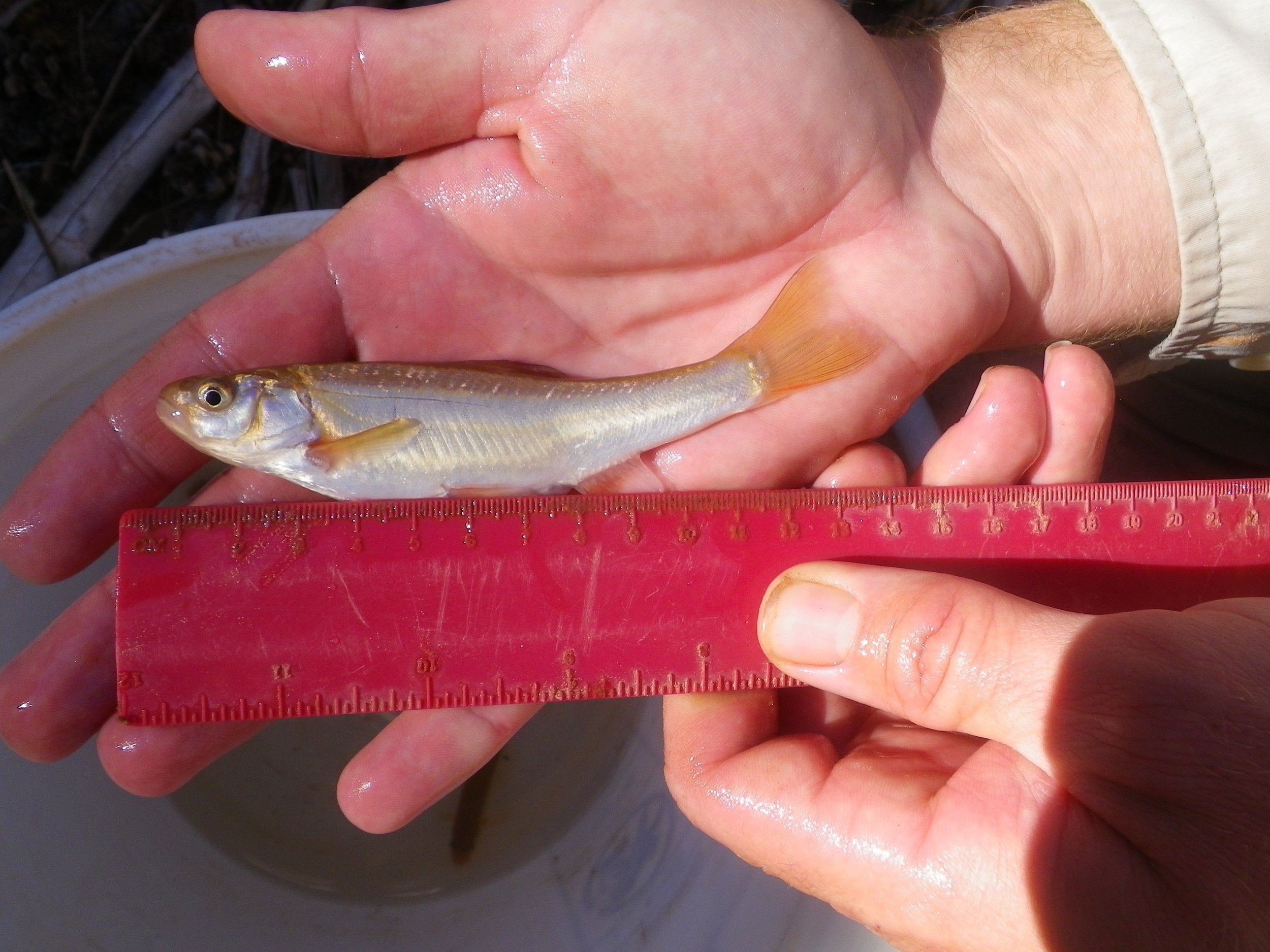
EXPERIENCE
Native Aquatic Biologist & Technician
Utah Division of Wildlife Resources / Hurricane, UT / 2015 – Present
Notable Accomplishments:
Led seasonal fishery technicians while conducting fieldwork to monitor sensitive/listed aquatic species throughout southern Utah (e.g., woundfin in the Virgin River, southern leatherside in the Sevier River, boreal toad on the Paunsaugunt Plateau, and sub-globose snake pyrg in the Bonneville Basin).
Demonstrated mastery of a variety of fisheries management techniques and equipment (e.g., electrofishing, seining, hoop netting, rotenone application, VIE/PIT-tagging, streamflow monitoring, 4WD, wilderness first aid, backpacking, and GPS navigation).
Collected, entered, managed, and processed high-quality biological and physical data for aquatic species conservation. Used Excel and ArcGIS to analyze data and create charts, graphs, figures, and maps. Submitted information to statewide databases (e.g., Utah Natural Heritage Program).
Wrote technical reports to summarize program accomplishments, evaluate ongoing monitoring efforts, and plan future conservation projects. Communicated findings with stakeholders and the public by developing printed and online media.
Presented at the Desert Fishes Council, Utah Chapter of the American Fisheries Society, Utah One Health, Snow Canyon State Park, and K-12th grade schools throughout Washington County.
Worked on the interagency rotenone treatment that successfully eradicated invasive red shiner from the Virgin River in Utah.
Collected/submitted biological samples for analysis (e.g., captured and swabbed amphibians in the field, then submitted samples to Pisces Molecular for B. dendrobatidis testing).
Master’s Student
Master of Natural Resources / College of Forestry / Oregon State University / GPA 4.0 / 2020-2023
I completed my Master of Natural Resources (MNR) degree through Oregon State University’s e-campus in March 2023. Attending graduate school while working full-time was challenging, but the combination of practical work experience and academic studies allowed me to apply theoretical concepts to real-world scenarios, fostering a comprehensive understanding of natural resource management.
For my MNR capstone project, I investigated the imperiled Virgin spinedace (Lepidomeda mollispinis) in the Santa Clara River of southwestern Utah under the guidance of my academic advisor, Dr. Ken Diebel. My multi-disciplinary case study examined the anthropogenic stressors that led to diminished spinedace populations, then described and evaluated legal actions and conservation efforts implemented from 1992 to 2022 to restore streamflow and Virgin spinedace populations in the Santa Clara River. Finally, recommendations were made to support self-sustaining Virgin spinedace populations and the socio-ecological integrity of the Santa Clara River Basin.
Coursework
-
Term: Spring 2019
Instructor: Dr. Badege Bishaw
Credits: 1
Description: Using readings, class discussions, and field trips, we introduce the program sessions and pedagogical methods, familiarize students with basic working definitions of sustainability, and build capacity to work as a group on a common project.
-
Term: Summer 2019
Instructor: Dr. David Perry
Credits: 3
Description: Focus on ecological sustainability and ecological concepts and principles, with examples drawn from forests and arid lands. Exploration of global ecosystems, ecological processes and services, factors that create and maintain diversity, ecosystem health and integrity. Principles for sustainable natural resource management and use.
-
Term: Fall 2019
Instructor: Dr. Monica Fisher
Credits: 3
Description: Focuses on the sources of market failure, the means of correcting market failure, and the real-world examples of making progress toward sustainable resource use by means of market mechanisms.
-
Term: Winter 2020
Instructor: Dr. Stacy Rosenberg
Credits: 3
Description: Using readings, personal experiences, and class discussions, students explore five principles of socially sustainable natural resource management and review the role they play in creating natural resource-based sustainable communities.
-
Term: Spring 2020
Instructor: Dr. Chelsea Batavia
Credits: 3
Description: Examines basic philosophies and ethical systems in American forestry, including Pinchot's agricultural/utilitarian approach and Leopold's biotic/ecological model, compares them to contemporary public attitudes, and considers their implications for sustainability.
-
Term: Fall 2020
Instructor: Dr. Ken Diebel (academic advisor)
Credits: 3
Description: Ecology of riparian freshwater and estuarine wetlands of the Pacific Northwest. Effects of land use on ecosystem structure, function, biodiversity, and restoration will be explored.
-
Term: Winter 2021
Instructor: Dr. Troy Hall and my academic advisor Dr. Ken Diebel
Credits: 2
Description: Identifies, poses, frames, and analyzes the various components of an important natural resource sustainability problem within the country, region, or organization and, at the end of term, present a workplan for its resolution.
-
Term: Spring 2021
Instructor: Dr. Erika Wolters (committee member)
Credits: 4
Description: Environmental and natural resource issues and policies in national and regional context, emphasizing public attitudes, elections, Congress, public policy, and relevant national and state agencies.
-
Term: Fall 2021
Instructor: Ms. Kuuipo Walsh & TA Anthony Holmes
Credits: 4
Description: Introduction to modern spatial data processing, development, and functions of geographic information systems (GIS); theory, concepts, and applications of geographic information science (GIScience).
-
Term: Winter 2022
Instructor: Dr. Bruce Dugger
Credits: 1
Description: Fisheries and wildlife professionals use meetings of scientists, managers and stakeholders to communicate key findings and develop consensus recommendations for policy. This experiential learning course exposes students to a scientific or management meeting in their chosen field (fisheries, wildlife, ecology, or conservation biology) and gets them to think about how meetings function as well as their content.
-
Term: Winter 2022
Instructor: Dr. Allison Swartz & Dr. Dana Warren
Credits: 3
Description: Structure and function of stream ecosystems, with emphasis on biological processes; physical and chemical relations; riparian influences and landscape perspectives.
-
Term: Spring 2022
Instructor: Dr. Lynette de Silva
Credits: 3
Description: Examine why nations rise and fall based on water availability and investigate why the United States is no exception. Explore how the US develops, protects, governs and manages its water resources and how it will cope with climate change and conflict. Discover resilience and sustainability through case studies.
-
Term: Summer 2022
Instructor: Dr. Nicole Duplaix
Credits: 3
Description: The importance of communication in science is stressed and a broad knowledge of endangered species-related information is provided. Students develop the ability to critically evaluate published information in scientific literature and to present and summarize it as part of the collaborative species recovery planning process with a varied audience of stakeholders.
-
Term: Fall 2022
Instructor: Dr. Elizabeth Swanson, Dr. Eric T. Jones, & Dr. Samuel Bell
Credits: 3
Description: Focuses on economic, environmental, social, cultural, ethical, and policy considerations of sustainable natural resource management. Explores international collaborative efforts to address global natural resource issues. Discusses key policy drivers, key stressors, balancing competing interests.
-
Term: Winter 2023
Instructor: Dr. Ken Diebel (academic advisor), Dr. Erika Wolters (committee member), & Dr. Melanie Davis (committee member)
Credits: 3
Description: Students work with their major advisor on the completion of their capstone project at the end of the MNR degree program. Students incorporate knowledge gained from coursework to address a natural resource problem within interconnected ecological, economic and social contexts.
Park Manager & Assistant Park Manager
Utah Division of Parks and Recreation / Goblin Valley State Park, Green River State Park, and Green River Golf Course / 2009-2014
Notable Accomplishments:
Managed a three-park complex with a combined $280,000 annual operating budget. Supervised over 20 employees and volunteers.
Served as a board member on the Emery County Travel Bureau, the Green River Community Development Board, and the Green River Wild and Scenic River Designation Council. Facilitated community outreach to promote rural economic development and the responsible enjoyment of natural resources.
Organized and hosted events to encourage local engagement with public lands (e.g., Goblin Valley Ultra Marathon and Green River Rampage Triathlon.) Examined impact of special events on park resources.
Secured grant funds for environmental education personnel and projects. Researched, designed, and implemented projects with allocated funds.
Implemented the ‘Goblin’s Lair’ permit system. Opened a 78-foot technical rappelling route while monitoring resource impact and visitor use statistics.
Interviewed by the BBC following an incident of vandalism at Goblin Valley State Park that resulted in international news coverage. Provided thoughtful and carefully chosen insights while adhering to legal considerations surrounding the pending lawsuit.
Developed Goblin Valley’s Sustainability Plan, which secured funding for the stabilization of the park’s main observation point.
Researched and co-wrote a response to Utah’s legislative Natural Resources Appropriations Subcommittee’s Intent Language. This mitigated further cuts to the Utah State Parks budget.
Managed the park’s environmental interpretation program. Communicated dense scientific information to the public in a compelling, accessible manner.
Presented annual environmental education programs at seven underserved rural schools.
Monitored park resources and used data to make management recommendations (e.g., monitored hoodoo erosion and Whipple’s fishhook distribution).
Created two new yurts for overnight park visitors. Identified demand, secured funding, sought archaeological clearance, and facilitated construction. These structures were featured at the Western Governor’s Association’s ‘Get Out West’ initiative.










